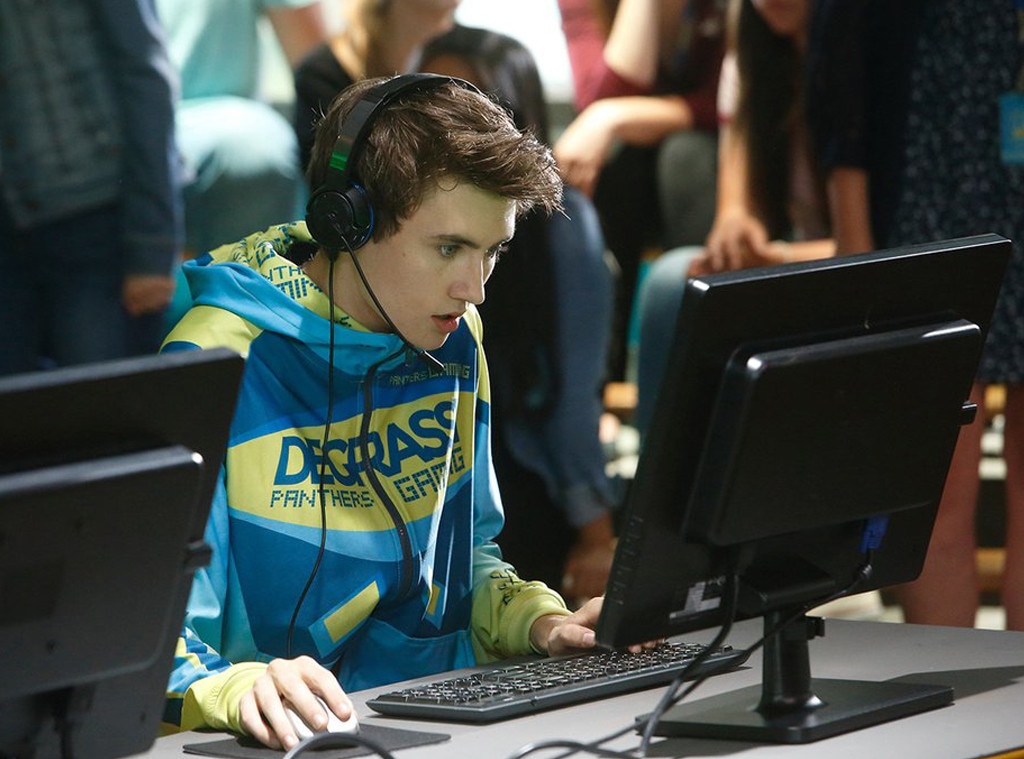 Twitter
TwitterOnce again, Degrassi went there.
While "Wheelchair Jimmy" has become a favorite Internet meme thanks to Drake's transformation from Canadian teen drama star (then known as Aubrey Graham) to one of the music industry's most-celebrated rappers, the story behind the nickname of his Degrassi character Jimmy Brooks is no laughing matter. In 2004, Degrassi aired what's arguably its most talked-about episode, as a bullied student, Rick (Ephraim Ellis), brought a gun to school, shot Jimmy, and paralyzed him from the waist down. (Rick died after his gun went off during an altercation with another student.)
Now in 2016, after its move from TeenNick to Netflix, Degrassi: Next Class decided it was time to tackle the issue of a school shooting, this time with Hunter Hollingsworth (Spencer MacPherson), a sophomore "introverted gamer," in episode 10 (the finale of Next Class' first season, which premiered on Jan 15.)
So why do this storyline again? Why now? And why with this particular character?
"I think we always start with the character and what we want their story to be," executive producer and writer Sarah Glinski told E! News. "So we knew we wanted to talk about Hunter, a character who feels like he never fits in, trying to find his place in the school, and what ultimately happens when people can't find a place for themselves."
Unlike season four's "Time Stands Still," however, Hunter ultimately doesn't use the gun at a school dance. His older brother Miles (Eric Osborne) called the police—who raided the school—after realizing his father's gun was missing.
"We had talked about the finale episode and him bringing a gun to school, I think we always knew that we didn't want him to do it," Glinksi said of the decision. "We wanted to talk about what people needed from the people around them, from their friends and family, so they're not alone, that there's an opportunity to talk them back. So that was always the plan."
Another major change in the storyline from 2004 to 2016? The audience's reaction, due in large part to the alarming increase in public shootings in recent history, including the Newtown School shooting at Sandy Hook Elementary in 2012.
"Back then, in season four, I don't think anyone would've ever expected Rick to bring a gun to school," Glinski said. "You can watch kids on Twitter, they're like, 'Oh my goodness, I think Hunter is going to bring a gun to school.'"
Firsts—whether it be a first kiss or first heartbreak or experiencing a loss for the first time—are what Degrassi is all about. But after 15 seasons and almost 500 episodes, it's understandable that the show would need to reuse certain storylines or issues.
"Even though we might revisit a lot of themes and a lot of the topics might be the same, the specifics of it are different," series creator Linda Schuyler said. So while one pregnant character may decide to have an abortion (Manny in season three), another will decide to keep the baby (Mia, season six) and yet another student will have a miscarriage (Clare, season 14). (There are at least two more pregnancies, too.)
"I think we just always look for a fresh way to tell a story," Glinski said of Degrassi's seven-member writers room, adding that "a different story told in a different character told in a different time" often leads to a completely different storyline and audience reaction.
"It's actually a different fan response and a really different arc for our fans watching the show that are going through the emotional journey with the character," she explained.
Degrassi: Next Class is available to stream on Netflix.